
Obezita psů je rychle rostoucí zdravotní problém. Obézní psi budou trpět problémy s dýcháním, cukrovkou, artritidou a bolestmi kloubů (1). Tento článek pojednává o důležitosti hubnutí a několika způsobech, jak zeštíhlit psa s nadváhou.
Dobrou zprávou je, že kontrolu hmotnosti psa máte pod kontrolou (2). Pokud máte v současné době psa s nadváhou, budete muset projít dvěma fázemi:hubnutím a řízení hmotnosti . Ke snížení energetického příjmu může být nezbytný přechod na jinou značku, nejlépe na hubnutí pro psy. V extrémních případech lze použít dva různé typy léků:dirlotapid a mitratapid (3, 4).
Kromě omezení kalorií bylo ve studiích prokázáno, že určité složení potravin zlepšuje úbytek hmotnosti u psů (5). Například krmivo pro domácí mazlíčky s vysokým obsahem bílkovin poskytly nejlepší výsledky (6). Takové diety spojené s menším kalorickým příjmem a přidáním cvičení byly extrémně účinné (7, 8). Na základě těchto a dalších studií vám můj níže uvedený návod, jak zhubnout pro obézní psy, navrhne plán krok za krokem.
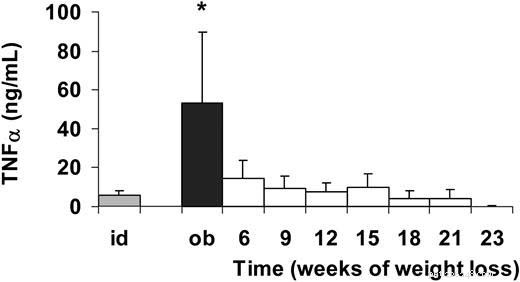
Tělo psa je stavěno tak, aby uneslo jen určitou váhu a jakákoliv navíc klade vyšší nároky jak na orgány, tak na kosterní systém (9). Jedním z problémů je, že majitelé zvířat nesprávně posuzují hmotnost a tělesný stav jejich mazlíčků. Novější studie ukazují, že správné posouzení může prodloužit životnost psů a vést k lepšímu celkovému zdraví.
Jako veterináři jsme zaznamenali nárůst počtu obézních domácích mazlíčků (10, 11). Ve své praxi se často setkávám s majiteli domácích mazlíčků, kteří hledají rady, jak zeštíhlit pejska s nadváhou. Mezi nejčastější zdravotní problémy způsobené nadváhou patří ty, které jsou uvedeny níže (12, 13, 14, 15).
Pes s nadváhou bude mít také sníženou životnost a jsou vystaveni vyššímu riziku náhlé smrti (16).
Stručně řečeno, obézní psi budou vyžadovat nákladnější veterinární péči, nebudou vést aktivní a příjemný život a nelze očekávat, že budou žít tak dlouho jako psi s optimální hmotností.
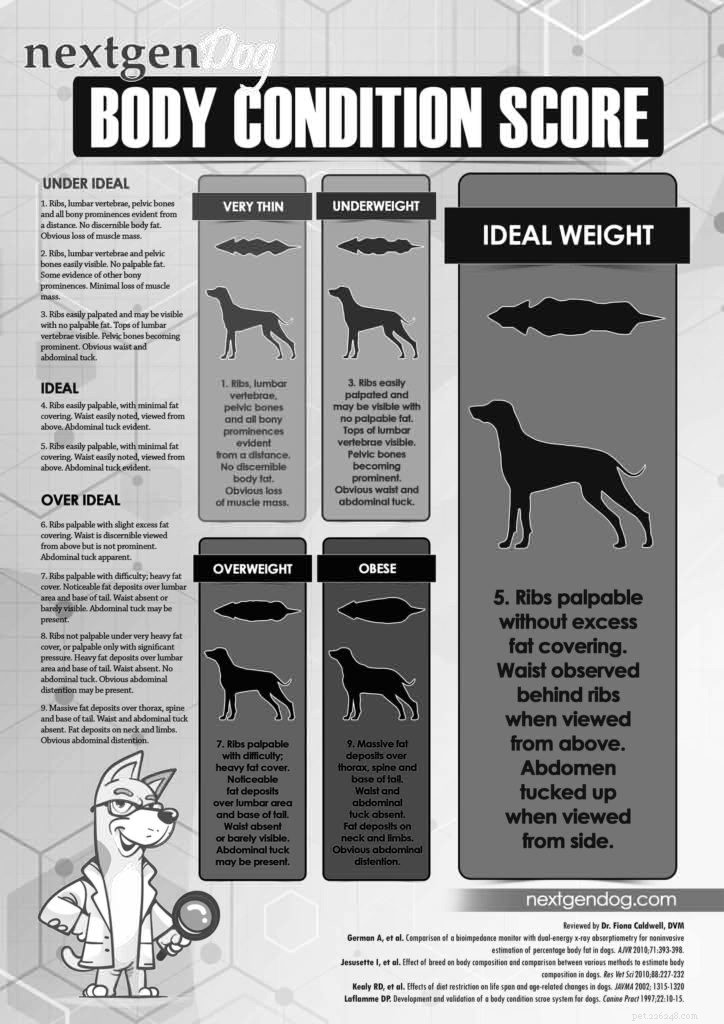
Nejlepší je požádat svého veterináře o odbornou radu ohledně ideální hmotnosti pro vašeho psa; jako výchozí bod však není těžké získat přiměřenou představu o hmotnosti vašeho mazlíčka pomocí grafu BCS (Skóre tělesného stavu, viz vpravo ) a sami si proveďte jednoduché fyzikální vyšetření.
Pes v dobré kondici by měl mít pod žebry postavu ve tvaru mírně „přesýpacích hodin“. Pohmat podél hrudníku – pokud snadno cítíte žebra po straně hrudníku, pak na nich zjevně není žádný tuk navíc. Měli byste být schopni rozlišit mezi hrudním košem zvířete a jeho břichem a břicho by se mělo mírně zužovat.
Pokud necítíte žebra, pas je plochý nebo vypadá nafoukle nebo se břicho táhne při chůzi, pak je čas na trochu změny v životním stylu a stravovacích návycích vašeho psa.
Studie ukazují, že existují určité rizikové faktory, které mohou způsobit, že váš pes bude vystaven vyššímu riziku obezity. Ty mohou zahrnovat jeho plemeno, jeho stravu, jeho věk a to, zda je nebo není kastrovaný. Pokud váš pes spadá do vyšší rizikové kategorie, je nejdůležitější, abyste zůstali na vrcholu jeho fyzické kondice.
Zjistili jste, že váš pes má nadváhu, tak co teď? Než se pustíte do jakéhokoli typu diety, poraďte se se svým veterinářem a prodiskutujte možnosti léčby hubnutí.
Ujistěte se, že váš mazlíček netrpí žádným typem zdravotního onemocnění, které způsobuje nárůst hmotnosti. Příliš mnoho psů je nasazeno na dietu a jejich majitelé po cestě zjistí, že příčinou jejich přibývání na váze nebyla špatná strava.
Denní kalorická potřeba vašeho mazlíčka se bude lišit podle jeho věku, životní fáze a denních aktivit. Faktory, jako je těhotenství, také zvýší denní potřeby. Váš veterinář vám také bude schopen poradit ohledně správného denního kalorického příjmu pro vašeho březího psa.
Vyzbrojeni znalostmi o tom, kolik kalorií váš pes potřebuje za den a několik značek krmiva pro hubnutí ve vaší skříni, objektivně se podívejte na jídlo, které váš pes bude konzumovat, z hlediska kalorií. Nezapomínejte na další pamlsky, které mu dáváte za dobré chování. Pamlsky by skutečně měly tvořit pouze asi 5 % jeho celkového kalorického příjmu během plánu na hubnutí.
Některé z nejlepších značek krmiv pro psy doporučených veterinářem pro hubnutí a udržování hmotnosti jsou:
| Náhled | Produkt | Hodnocení | |
|---|---|---|---|
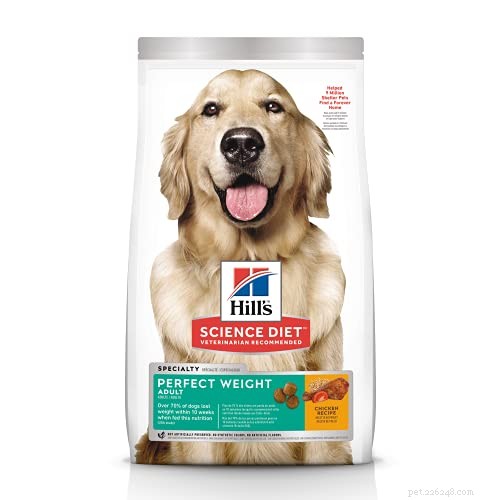 | Suché krmivo pro psy Hill's Science Diet, pro dospělé, perfektní... | 5 674 recenzí | Zkontrolujte cenu |
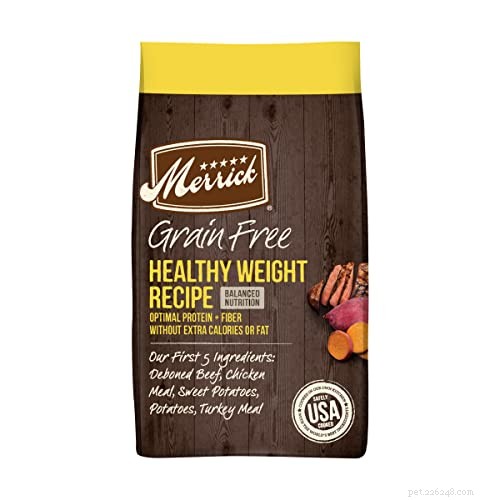 | Suché krmivo pro psy Merrick, zdravá váha bez obilovin... | 801 recenzí | Zkontrolujte cenu |
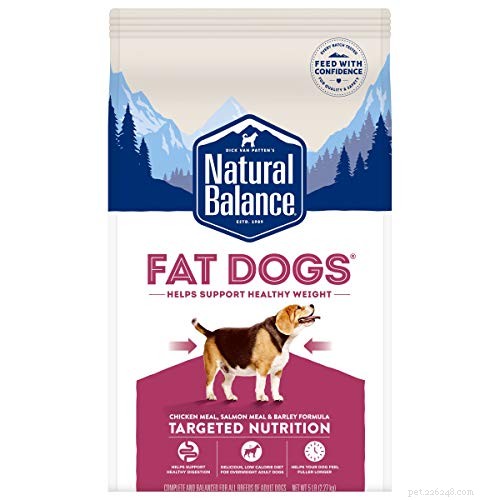 | Natural Balance Fat Dogs Nízkokalorické suché krmivo pro psy,... | 2 870 recenzí | Zkontrolujte cenu |
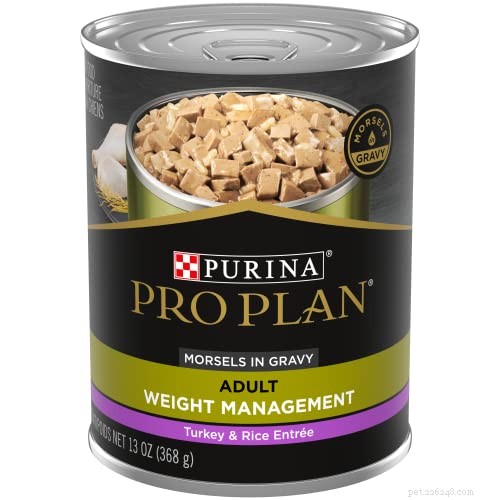 | Purina Pro Plan Nízkotučné krmivo pro psy s kontrolou hmotnosti... | 3 969 recenzí | Zkontrolujte cenu |
Zavádění nového hubnoucího jídelníčku pro psa je třeba provádět rozumně a postupně. Nemůžete se jednoduše rozhodnout snížit dnes na polovinu množství, které jste včera nakrmili svého mazlíčka. Jakákoli dieta musí být doplněna udržitelným cvičebním programem; pomalu a stabilně vyhrává závod, dnes žádná namáhavá túra a po zbytek týdne nic. Níže je uvedeno několik obecných tipů, které vám mohou pomoci.
Another way to aid weight loss is to try cutting back on the regular dog food and adding some vegetables instead. Fresh vegetables are an excellent source of fiber and vitamins and will add variety to the diet too, and they're low in calories. Some excellent options include:Broccoli, Apples, Celery, Cucumber, Carrots, Bananas, Whole grains (oats, brown rice, millet, served with a tbsp. olive or sesame oil), and Green beans.
Any successful diet must be complimented by a sustainable and suitable exercise program. Reduced calories alone may go a certain way towards weight loss, but another major part of dieting is muscle toning, which is a result of using and strengthening the muscles which have been ‘on holiday’, so to speak.
While the actual daily food intake part of the diet may be a little complicated and require some detailed calculations, the exercise part is something enjoyable to both man and beast. Exercising with your dog is fun for both of you and easy enough to fit into your daily routine.
Some simple examples are:
You may well find that increased exercise will help you achieve your personal weight goals too.Again, it is best to consult professional advice before launching an exercise program. Very overweight dogs may need time to build up the necessary stamina to maintain rigorous physical exercise. Like humans, your dog will be exhausted after the first few times of extended play, but don’t lose heart – in time he will build up their strength and endurance and be able to sustain it going forward.
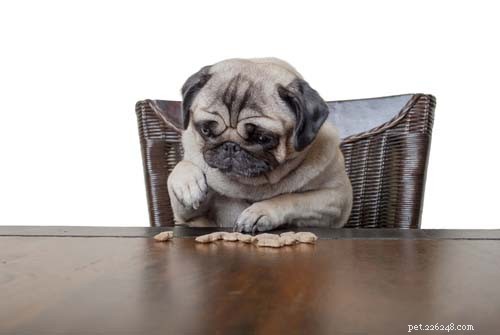
Today is D-day. There is no better time to get moving and cut back on eating! I cannot stress enough the importance of consulting your veterinary practitioner before launching a full-scale weight loss operation. So, if at all possible, book an appointment to have a thorough check-up of your dog, discuss the weight loss options and ask for any tips or advice relating specifically to your dog.
Determine your pooch’s ideal daily calorie intake. In the absence of seeing a vet to determine this, the following formula/s might prove to be useful to you (calculation is done in pounds)
Divide your dog’s weight by 2.2, then multiply the result by 30 then add 70 [(lbs/2.2)x30]+70
This will give you a general idea of how much your dog should be eating if it is an indoor and inactive pet. Use this only as a guide, because the metabolic needs of each pet will vary.
Take your new meal/food diary and work out the calorie count of a typical day for your pet (i.e before you started the diet). Most good quality pet foods have comprehensive nutrition charts on the bag or tin. If you are feeding your pet dry or tinned foods, you can easily measure accordingly, however keep in mind that most commercial pet foods are measured using an 8oz cup measure – make sure you do the same.
If you are feeding a combination of bought and homemade foods, you will need to consult dietary charts or books for caloric information on the ingredients that go into the homemade portion of the diet and add up the total that is being served per portion. Consult the calorie charts below for calorie counts of common vegetables and fruits.
Compare the calorie count your dog has been consuming with what he/she needs. Decide where you are going to cut back.
Start the first by reducing your dog’s daily intake by just 25%. Then reduce it every two or three days by 10% (you will continue to do this until you are seeing a 1% loss per week). Don’t make drastic reductions all at once; we are aiming for gradual weight loss which can be sustained, not dramatic loss that is easily gained again.
You may find it easier to create a menu plan for the week – list out exactly what your dog will eat each day – don’t forget to allow for treats. Remember, as a rule of thumb, treats should comprise only 3 – 4% of the daily intake. Treats don’t necessarily have to be food; how about a new toy?
Create an exercise plan in conjunction with the menu plan. Try to incorporate some form of exercise each day. Just like people, if your pet has not been used to regular exercise, it will take time for him/her to get accustomed to it so start gently and increase the exertion level over time. An example of the first week might be:
The term ‘brisk walk’ means a walk at a steady pace, without stopping for the dog to mark territory or sniff at scents. Hold the leash firmly and close and use obedience commands such as ‘come’ or ‘heel’ if the animal is inclined to try and stop.
Your dog needs to understand that you are on a mission and that this is not just the casual stroll that he may have been used to in the past. If your pooch refuses to co-operate you may have to resort to taking it back home, crating the animal or giving it no attention for a set length of time, then try again later in the day. Do not over-exert elderly dogs or those with poor health – again, it is best to consult your veterinary specialist in such circumstances.
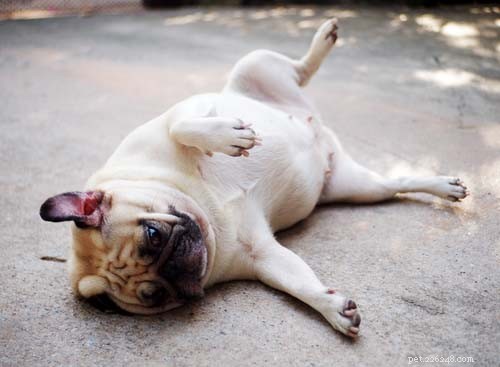
By now the honeymoon of the diet is over and your dog should have fully ‘switched over’ to the new diet menu and be getting accepting the fact that you are serious about the exercise program.
Be sure to do a weigh-in session and record your pooch’s progress. The ideal and safe weight loss is approximately 1% per week, however, if the progress isn’t that marked, don’t forget that the animal hasn’t been on the diet properly for even a full week.
Take time out to create a menu and exercise plan at the beginning of the week – it will save you the daily frustration of trying to work out serves and calories.
Depending on your own daily schedule, you may find it beneficial to break up mealtimes into several smaller ones. Remember, dogs aren’t mathematicians and making the meal portions smaller and more often may prove to be more satisfying and help curb any desires to scavenge.
Remove the food bowls after 30 minutes or so and discard uneaten portions. If you leave bowls around you are encouraging an ‘all day buffet’ rather than specific meal times.
Also, try incorporating a little exercise into the mealtime routine. Place the food in several different locations or, if your dog is an inside pet, at the top or bottom of a staircase. You will need to be creative in coming up with new ideas because overweight dogs are smart and if the meal time location moves up or downstairs, so will they!
Keep in mind that your dog may benefit from a little extra love and affection while on a strict diet. An extra cuddle or massage will re-assure him that you still love them and the restricted meals and lack of regular, unhealthy goodies does not mean that you have lost interest in him.
Keep working on the exercise program. It may seem very constant, but results may already be showing. Your pet should be starting to show signs of increased stamina and maybe you too are proving the benefits of daily exercise! Try incorporating a swim (weather permitting) into this week’s program – swimming is an excellent way of strengthening and toning nearly every muscle in the body.
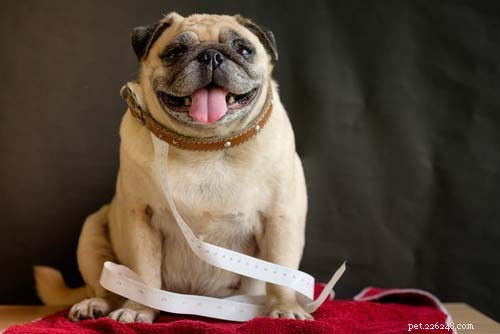
You should be starting to notice real changes now. With the constant exercise and healthy eating program your dog should be more active, more energetic and starting to lose that extra flab that didn’t look good.
Take time to record these changes in your diary. Take photos of your pooch and add them to your record.
However thrilling this change may be, please don’t resort to treating your dog because he/she is doing so well. Remember, you love your pet and you are doing the best for them, do don’t spoil it now!
Again, take time to plan out the week’s meals and exercise program and stick to it. By now, it will be seeming more natural and you will hopefully be adjusting your lifestyle around the extra activities.
Weigh-in again and take time to enjoy the results of your efforts. Update your diary and take more photos. Share your excitement with your friends and family and treat your dog to an extra cuddle or favorite activity. Your dog should be looking much better, slimmer and generally healthier.
If your pet has reached its goal weight, you need to establish a maintenance diet. Talk to your vet about this, because maintenance programs are individual and vary wildly depending on the type of dog.
There is a tendency to relax on exercise once the optimum weight is reached, however this is a trap that you must take steps to avoid. Keep up the daily exercise – your dog will now be enjoying it and looking forward to these times, so don’t slacken off. After all, its quality time for them and you and can be turned into a whole family activity.
Don’t be disheartened if the goal weight hasn’t been achieved inside one month. Consider how long it has taken for the dog to become this overweight in the first place and accept that it is going to take a lot of effort and dedication to bring him/her back to what they should be.
“Rome wasn’t built in a day”. We hear that said often enough and it applies to dieting too. Just keep going, steadily moving forward. It may not be easy to see the daily improvement when you are with your pet all the time, but look back over a week, a month and enjoy the positive changes.
Your efforts will be well worthwhile when you consider that you are adding extra years to your dog's life, not to mention a much better quality of life. Apart from the aches, pains and suffering you are saving your pooch, consider the savings you are making yourself on extra veterinary bills and prescribed medicines and treatments!
I think it really boils down to how much you love your pet – if you love them you will care for them in the way that is best for them, not by catering to their every whim and fancy and spoiling them with unnecessary and unhealthy treats.
Zveřejnění :Z odkazů na této stránce můžeme získat affiliate provize zdarma. Naše hodnocení produktů to neovlivnilo. Přečtěte si více zde a úplné znění naleznete zde.
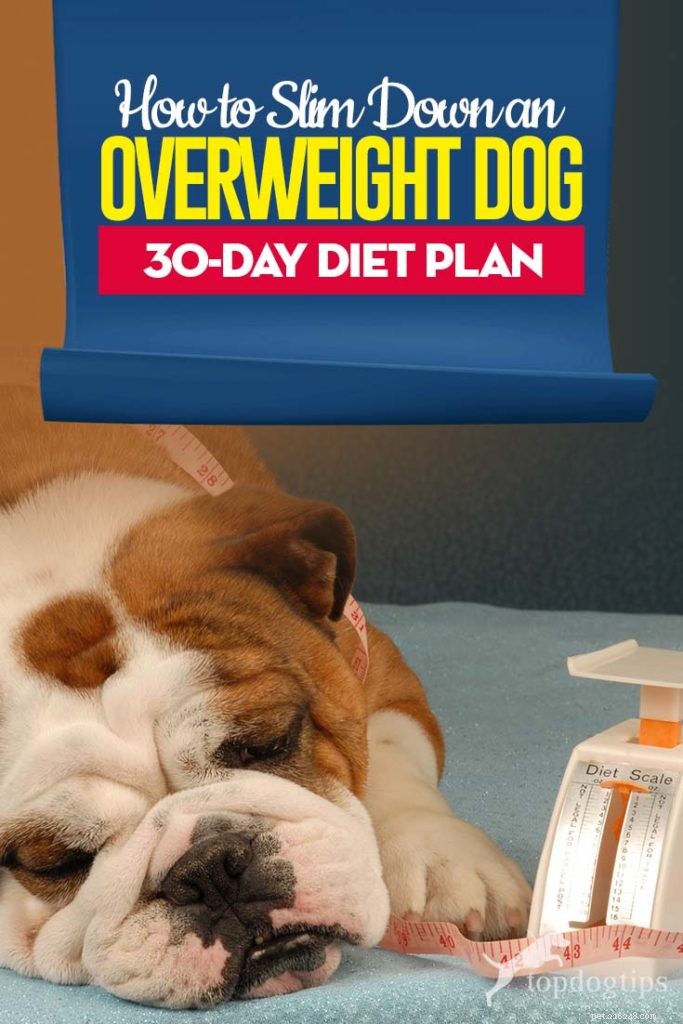

V posledních letech došlo k neblahému trendu. Psi, stejně jako jejich lidští společníci, přibývají na váze. Obezita je epidemie a bohužel se jí dá snadno předejít. Naučte se, jak přimět psa zhubnout může vašemu mazlíčkovi prodloužit život! Kila navíc nejsou nebezpečná jen pro zdraví vašeho psa. Moh
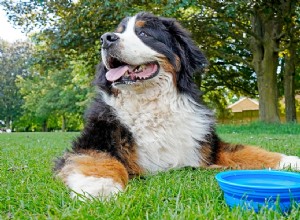
Když teploty stoupají, může se stát, že se psi přehřejí. Ochladit psa může být něco, na co v extrémních letních vedrech myslíte, ale je to důležité informace o první pomoci, které byste měli mít po ruce po celý rok. Vědět jak zchladit psa může se hodit, pokud cestujete do teplejšího klimatu nebo se